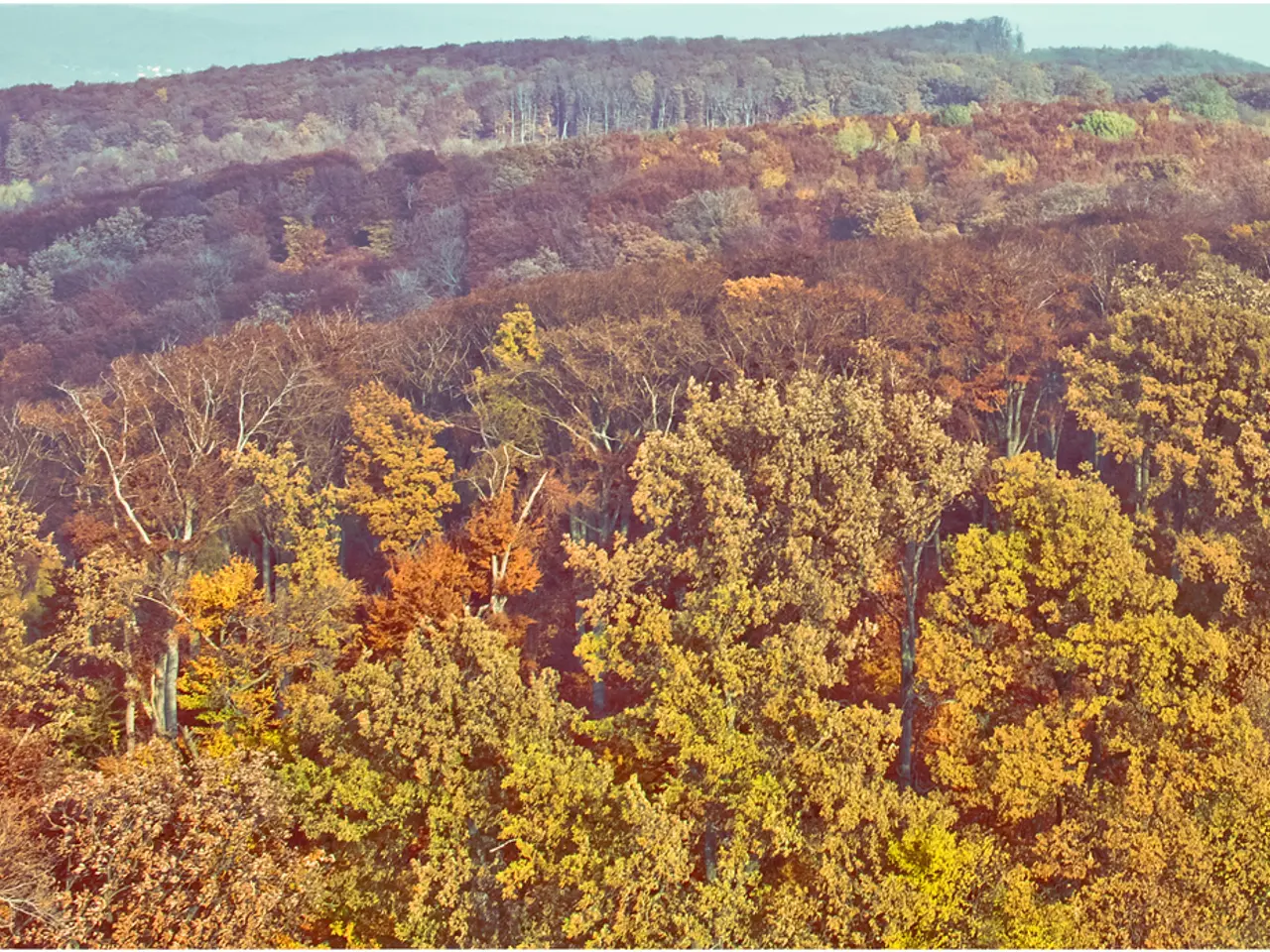Shift in harvests: Gardeners grapple with growing lemons instead of apples due to climate change
UK Gardeners Embrace Climate-Resilient Plant Choices
In the face of climate change, gardeners across the UK are adapting their plant choices to create gardens that can withstand hotter, drier summers and more frequent extreme weather events such as droughts and floods.
Kew Gardens is leading the way, planting trees like Field Maple, Oriental hornbeam, Judas tree, and Japanese elm, chosen for their resilience to hotter and drier conditions as well as heavy rainfall. These species come from regions with climates resembling the predicted future UK climate, such as parts of Southern Europe [1].
At the 2025 RHS Chelsea Flower Show, gardens showcased ‘future trees’ such as Zelkova and Pinus mugo, which are adapted to flood, drought, and higher temperatures, together with rainwater capture designs to mitigate flooding and conserve water [2].
In addition to trees, UK gardeners are turning to perennial plants. These plants build soil organic matter and create durable carbon sinks with their extensive root systems. Perennials reduce soil disturbance, water use, and greenhouse emissions compared to annual plants. They also support biodiversity by fostering healthy ecosystems and pollinators, making them a climate-smart choice [4].
James Hitchmough, a renowned landscape architect, predicts that the UK will have a Mediterranean climate in the future [3]. To prepare for this, he conducted a study of climate predictions before planting his new garden. He suggests that things with big soft leaves will probably be losers in the south, but will grow well in the northwest.
Gardeners like Dan Pearson and Derry Watkins are also adapting to the changing climate. Pearson has noticed marked changes in the plants that thrive in his garden, and has had to accept that he can no longer grow cimicifugas and acteas. Watkins, on the other hand, has decided to embrace the change, propagating anything tender in the South West and leaving original plants outside to see what happens.
The Ventnor Botanic Garden on the Isle of Wight has taken a bold step, planting the first citrus grove in the UK. Conditions at the garden have become mild enough to grow a range of lemons, oranges, grapefruits, Buddha's hand citrus, and a rare caviar citrus [5].
However, not all gardens are thriving. The Horniman Museum gardens are struggling with horse chestnuts affected by horse chestnut leaf miner and bleeding canker. Errol Reuben Fernandes, head of horticulture at the Horniman Museum gardens in southeast London, is relocating tree ferns due to their inability to cope with current conditions.
As the climate continues to change, UK gardeners are innovating to create resilient gardens that can cope with unpredictable weather patterns. They are moving towards planting climate-adapted tree species from warmer regions, drought-wise perennials, and incorporating water management techniques like rainscaping. This shift not only ensures the survival of gardens but also contributes to carbon sequestration and biodiversity conservation.
References: [1] RHS Chelsea Flower Show 2025 [2] Kew Gardens [3] James Hitchmough [4] Perennial Plants [5] Ventnor Botanic Garden
- In response to climate change, gardeners in the UK are embracing horticulture that includes planting climate-resilient trees and perennials as part of garden design.
- Kew Gardens is leading this movement, planting tree species like Field Maple and Oriental hornbeam, chosen for their resilience to hotter, drier conditions and heavy rainfall.
- At the RHS Chelsea Flower Show in 2025, gardens showcased flood-, drought-, and heat-adapted trees like Zelkova and Pinus mugo, along with rainwater capture designs to mitigate flooding and conserve water.
- UK gardeners are also turning to perennial plants, which build soil organic matter, create carbon sinks, reduce water use, and support biodiversity.
- Famous designers like James Hitchmough, Dan Pearson, and Derry Watkins are adapting their garden design to the changing climate, with Hitchmough predicting a future Mediterranean climate in the UK.
- Innovative approaches in home-and-garden lifestyle are being taken, such as the Ventnor Botanic Garden's planting of the UK's first citrus grove, even as some gardens like the Horniman Museum gardens face struggles due to the effects of climate change on certain plant species.





